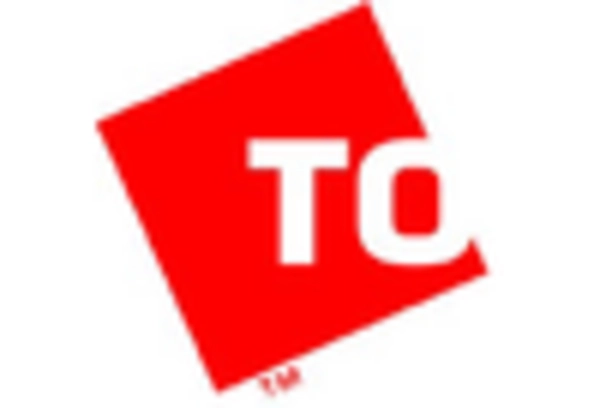Rising Energy Demand
The increasing energy demand in Germany is a pivotal driver for the power transformer market. As the country continues to industrialize and urbanize, the need for reliable and efficient power distribution systems becomes paramount. The German government has set ambitious targets for renewable energy integration, which necessitates the deployment of advanced power transformers to manage the fluctuating supply from sources such as wind and solar. In 2025, the energy consumption in Germany is projected to rise by approximately 2.5%, further emphasizing the need for robust transformer infrastructure. This trend indicates that the power transformer market will likely experience substantial growth as utilities and energy providers invest in upgrading their systems to meet the rising demand.
Aging Infrastructure Replacement
The aging electrical infrastructure in Germany presents a critical opportunity for the power transformer market. Many existing transformers are nearing the end of their operational lifespan, leading to increased maintenance costs and reliability issues. The German government has recognized the need for modernization and is allocating funds to replace outdated equipment. In 2025, it is projected that approximately 40% of transformers in operation will require replacement or significant upgrades. This situation creates a favorable environment for manufacturers in the power transformer market, as utilities seek to invest in new technologies that enhance efficiency and reliability.
Regulatory Framework Enhancements
Germany's regulatory framework plays a crucial role in shaping the power transformer market. The government has implemented stringent regulations aimed at improving energy efficiency and reducing carbon emissions. These regulations often mandate the use of high-efficiency transformers, which can lead to significant energy savings. For instance, the European Union's Ecodesign Directive requires that transformers meet specific efficiency standards, thereby driving the demand for modern, energy-efficient models. As a result, manufacturers in the power transformer market are compelled to innovate and comply with these regulations, which can potentially enhance their market position and profitability.
Investment in Renewable Energy Infrastructure
The transition towards renewable energy sources in Germany is a significant driver for the power transformer market. With the government's commitment to achieving a 65% share of renewables in the energy mix by 2030, substantial investments are being made in the necessary infrastructure. This includes the installation of new power transformers to facilitate the integration of renewable energy into the grid. In 2025, it is estimated that investments in renewable energy infrastructure will exceed €30 billion, creating a robust demand for transformers that can handle the unique challenges posed by variable energy sources. Consequently, this trend is likely to bolster the power transformer market as companies seek to capitalize on the growing need for efficient energy distribution.
Technological Innovations in Transformer Design
Technological innovations are reshaping the power transformer market in Germany. Advances in materials science and engineering have led to the development of transformers that are lighter, more efficient, and capable of handling higher loads. Innovations such as amorphous steel cores and advanced cooling systems are becoming increasingly prevalent, allowing for improved performance and reduced energy losses. As the demand for smarter and more efficient power systems grows, manufacturers are likely to invest in research and development to create next-generation transformers. This trend suggests that the power transformer market will continue to evolve, driven by the need for enhanced performance and sustainability.

















Leave a Comment